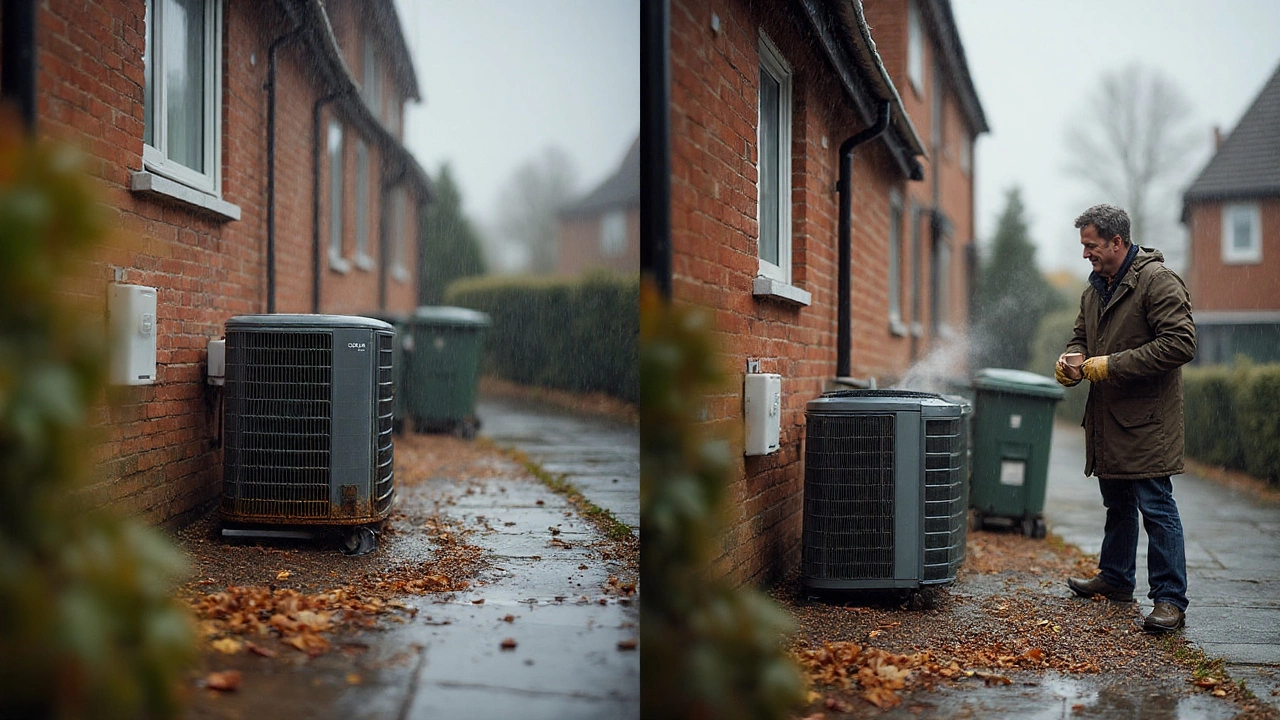Thinking about an air source heat pump (ASHP) for your home? You’re not alone. Homeowners love the idea of a single system that heats in winter, cools in summer, and saves money on energy bills. The tech behind it is surprisingly simple, and once you get the basics, you’ll know when to call a pro and when you can troubleshoot yourself.
An ASHP pulls heat from the outside air and moves it indoors using a refrigerant cycle – the same principle that powers your fridge. Even on cold days, there’s still heat in the air, so the pump can extract it and boost it with a compressor. In summer, the cycle reverses: it grabs indoor heat and pushes it outside, acting like an air‑conditioner.
The key parts are the outdoor unit (the fan and compressor), the indoor coil, and the control board. The outdoor fan draws air across the coil, the refrigerant absorbs heat, and the compressor raises the temperature before sending it inside. Modern units have smart sensors that adjust speed based on outdoor temperature, so they stay efficient from mild days down to -15°C.
Efficiency is measured by the Coefficient of Performance (COP). A COP of 3 means you get three units of heat for every unit of electricity used. The hotter the outside air, the higher the COP. That’s why you’ll see a dip in performance on the coldest nights, but even then, a good ASHP can still be cheaper than electric resistance heating.
Most problems you’ll encounter are easy to spot. If the heat pump isn’t blowing warm air, the first thing to check is the thermostat setting – make sure it’s set to heat, not cool or fan‑only. Next, look at the outdoor unit; debris, leaves, or snow can block airflow and cause the system to overheat and shut down.
Another frequent complaint is a loss of heating efficiency. This usually means the air filter is clogged or the refrigerant level is low. Cleaning or replacing the filter is a quick DIY job. Low refrigerant needs a licensed technician, because handling the refrigerant requires special equipment and certification.
If the unit runs but you hear strange noises, it could be a loose fan blade or a worn motor bearing. Turn off the power, check for anything hitting the fan, and tighten any loose screws. Persistent grinding or squealing signals a mechanical issue that a professional should address.
When the pump won’t turn on at all, look at the circuit breaker and the control board’s power supply. A tripped breaker is often the culprit; reset it and try again. If the pump still won’t start, the thermostat wiring might be faulty, or the internal safety switch could have tripped. In those cases, it’s safest to call an accredited installer.
Regular maintenance goes a long way. Schedule a yearly service to clean the coil, check refrigerant charge, and test the safety controls. Doing this before the heating season can prevent most breakdowns and keep the COP high.
Bottom line: an air source heat pump is a smart, versatile choice for most UK homes. Understanding the basics, keeping the outdoor unit clear, and rotating the filter each few months will keep it humming. When you spot a bigger issue – low refrigerant, odd noises, or a complete shutdown – reach out to a qualified technician. With a little care, your ASHP will deliver warm winters, cool summers, and lower bills for years to come.

Real UK lifespan for air vs ground source heat pumps, what shortens or extends life, maintenance steps, and a simple repair-or-replace guide you can actually use.

When your dryer suddenly stops working or leaves your laundry sopping wet, it’s tough to know what your best next step is. Should you call in a repair service, try a DIY fix, or bite the bullet and shop for a new one? This article breaks down the real costs, tells you what repairs make sense, and gives you actionable tips so you don’t spend more than you have to. It covers which common dryer issues can be fixed on a budget, when to say goodbye to a worn-out machine, and how to make smart decisions that save time, money, and hassle.

When facing a broken boiler, many homeowners find themselves debating the merits of repairing versus replacing. Considering factors like costs, age of the boiler, frequency of issues, and energy efficiency can help make an informed decision. Exploring repair benefits as a cost-saving solution might be worthwhile for some, while others may find replacement offers better long-term advantages. Understanding your system's specific needs ensures optimal performance during the colder months.

Extractor fans are a lifesaver when it comes to clearing out steam, smoke, and nasty odors, but many people forget they actually need a little love now and then. This article cracks open the question of whether extractor fans need maintenance, and if so, what kind and how often. We'll cover quick tips, warning signs, and busted myths around fan care. Get the straightforward facts (and a few surprises) about keeping your fan working its best. No nonsense, just super practical info you can use right now.

Looking for the right person to service your boiler? Here’s what you need to know about boiler service, finding qualified engineers, costs, and why it matters in 2025.

Wondering how long a washing machine should actually last? This article breaks down real averages, points out what causes washers to wear out, and shows simple ways to get more years out of your machine. We’ll look at red flags for replacement, compare old versus new models, and clear up some common myths about washers. If you want your next laundry day to go smoothly—or you’re tired of surprise breakdowns—this guide’s for you.